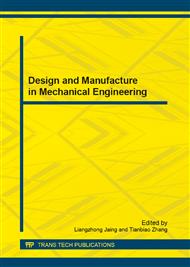p.168
p.173
p.179
p.185
p.189
p.196
p.202
p.210
p.215
Numerical Investigation of Sub-Iteration Criterions for Unsteady Flow Computations with Dual-Time Method
Abstract:
The convergence of sub-iteration with the dual-time method is very important for the prediction of unsteady flow field. The influence of sub-iteration step number, criterion of sub-iteration convergence and the choice of physical time step size on the calculation results are discussed by solving of the two-dimensional unsteady Euler equations. A new convergence criterion (named residual criterion) of sub-iteration for unsteady flows is proposed, and the unsteady flow test case AGARD-CT5 is calculated to verify the new criterion. The results show that, with the same criterion of sub-iteration, the results from different physical time step sizes are in agreement with each other. The difference between the experiment data and the numerical results are small, and if the sub-iteration criterion used is reasonable and small enough, the dependence of numerical results of unsteady flows on the physical time step will be decreased as possible. The new criterion of sub-iteration for dual-time step unsteady calculations can be used for engineering problem.
Info:
Periodical:
Pages:
189-195
Citation:
Online since:
September 2013
Authors:
Keywords:
Price:
Сopyright:
© 2013 Trans Tech Publications Ltd. All Rights Reserved
Share:
Citation:


